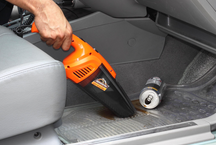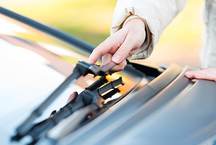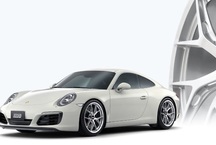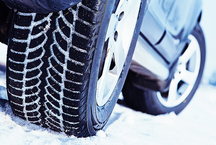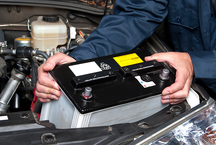Top 5 brake fluids
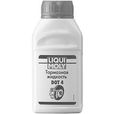
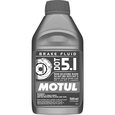
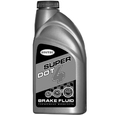


Brake fluid has a greater effect on the condition and efficiency of the brake system than is commonly believed - often in a service station you can see a car with a jammed support, whose owner answers the question: “When did you change brake fluid?” Replied with surprise: “Why?”.
Well, before discussing the best representatives of their class, let's look at what a modern brake fluid is.
Brake Fluid Requirements
In the process of braking, the kinetic energy of the car is converted into heat. Heating pads transfer heat further - to the piston and the caliper body, they are already heating the brake fluid itself. Hence the first requirement for a better brake fluid: as high as possible in order to avoid "failures" of the brake pedal is similar to those that occur when airing the brakes. The increase in speeds and the complication of traffic led to the fact that the old brake fluid brake fluids no longer meet the needs of motorists, and the new standard DOT4, the most widely used now, came to light.
The second requirement is minimal corrosivity: The well-known souring of the working pistons in this case is only the tip of the iceberg, corrosion of the brake lines themselves is much more dangerous. Here the first, so to speak, “conflict of interests” occurred - the need to ensure a high boiling point required the use of an extremely hygroscopic polyethylene glycol base, hence the need to store brake fluid in a tightly closed container. Water that has collected water not only accelerates corrosion in the brake system, but also boils at a much lower temperature, which is familiar to many owners of sports cars and especially motorcycles: the “failure” of brakes during aggressive driving can cause a serious accident.
The third requirement is good lubricating propertiesreducing wear not only the brake cylinder cuffs, but also the ABS hydraulic unit. In this regard, modern DOT5 silicone-based brake fluids are superior to the older DOT4 standard, and given their lower hygroscopicity and high boiling point, they will be the best choice for those who like to drive fast and stop in time. The DOT5.1 standard, designed specifically for cars with anti-lock braking systems, provides for the introduction of an increased amount of antifriction additives into the usual glycol base, and fluids of this class will be preferable for most cars, since they are compatible with seals designed for old standards.
And finally, fourthly, brake fluid is required high viscosity stability, allowing the brakes to work adequately in the conditions of winter cold. Again, this is most important for cars with anti-lock brakes: frozen fluid can lead to a malfunction of the hydraulic unit, on cars where course stabilization is tied to the anti-lock system and, like in modern crossovers, a traction control system will also change the car’s controllability.
| Category | A place | Name | Rating | Price |
|---|---|---|---|---|
| The best brake fluids of foreign production | 1 | Castrol React DOT4 Low Temp | 9.9 / 10 | 450 |
| 2 | Motul DOT 5.1 Brake Fluid | 9.5 / 10 | 600 | |
| 3 | Liqui Moly Bremsenflussigkeit DOT4 | 9.0 / 10 | 300 | |
| The best brake fluids of domestic production | 1 | RosDOT-4 | 9.4 / 10 | 180 |
| 2 | Sintec Super DOT-4 | 9.1 / 10 | 100 |
The best brake fluids of foreign production
|
Castrol React DOT4 Low Temp
450
Although this brake fluid is also certified according to the DOT4 standard, in terms of boiling point it significantly exceeds the requirements of this standard: in the “dry” state it boils at 265 ° C, in the humidified state at 175 ° C. Considering that the manufacturer prescribes its replacement every two years , its characteristics are more than sufficient for close to sports riding. The prefix "Low Temp" in the product name appeared not in vain - unlike conventional DOT4 liquids produced by Castol, here the viscosity is reduced several times: to 650 mm2 / s, so that for the northern regions it will be a more profitable acquisition than Motul DOT5. 1, runner-up. In general, taking into account all the characteristics of React Low Temp, it seems that DOT4 certification here has become more of a marketing ploy, allowing you to sell the actually DOT5.1 compliant liquid in the most demanded market segment. Unfortunately, Castrol marketers cannot blame for a strange decision on packaging a product: you will not succeed in finding a liter jar of this liquid, so if you completely replace the liquid in the system, you will have to bother with a few 500-gram, overpaying for an extra container. Main advantages:
Minuses:
|
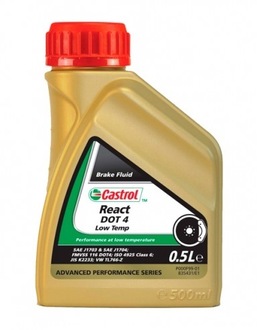 9.9 / 10
Rating
Reviews
I respect this brand, and the “winter” brake fluid Castrol, according to my feelings, is the best, and not a single shame has confounded its brand. |
|
Motul DOT 5.1 Brake Fluid
600
Unlike brake fluids with “clean” DOT5, this product from Motul is made on the traditional glycol base and is fully compatible with DOT3 and DOT4 standard fluids. Thanks to this, it can be used both topping up the brake system and for complete replacement. The second option, of course, is preferable: this fluid is perfect for lovers of unhurried driving and hot drivers: its boiling point is at least 185 degrees in a humidified state (when tested, moisture is simulated, approximately imitating a year of service), after complete replacement fresh brake fluid will boil at 272 degrees, which is almost two times higher than the requirements of the DOT4 standard, under which braking systems for urban cars are usually calculated. Therefore, there is reason to expect a long service life of the liquid, even with aggressive driving. Since the 5.1 standard was developed specifically for cars with ABS, the low-temperature viscosity is significantly reduced: at -40˚С, Motul has a viscosity of only 820 mm2 / s, which is more than two times less than the requirements of the DOT4 standard. Main advantages:
Minuses:
|
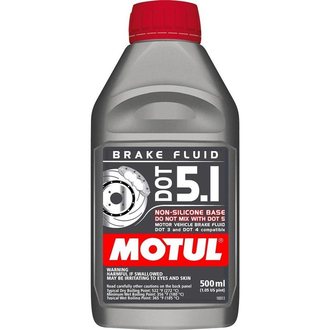 9.5 / 10
Rating
Reviews
Often I travel a lot both in summer and in winter. After replacing the old “tormozuhi” on Motul, the brakes became noticeably more informative, especially in winter, with sharp braking the pedal does not become wadded. |
|
Liqui Moly Bremsenflussigkeit DOT4
300
Perhaps the main disadvantage of this brake fluid can be called its difficult to pronounce original name. Fortunately, Russian-speaking customers cannot pronounce the “bremsenflussigight” because the manufacturer localizes all the inscriptions for the Russian market - for this it is worth saying a special thank you. However, we turn to more vital properties. Alas, unlike the leaders of the rating, here the manufacturer did not noticeably exceed the certification requirements: both in the boiling point (230 ° C for fresh liquid, 155 ° C for humidified), and especially in low-temperature viscosity (1800 mm2 / s!), It is noticeable loses to other options presented in the rating - all these parameters clearly correspond to the standard, but no more. To some extent, this is offset by a low price, but it is not worth recommending it for use on vehicles with ABS in northern latitudes.But one can not fail to mention the good lubricating properties of this fluid and the manufacturer’s emphasis on the anti-corrosion characteristics of its product - in terms of the combination of properties, Liqui Moly brake fluid will be the best choice for drivers who are not prone to recklessness and live in central Russia and south. Main advantages:
Minuses:
|
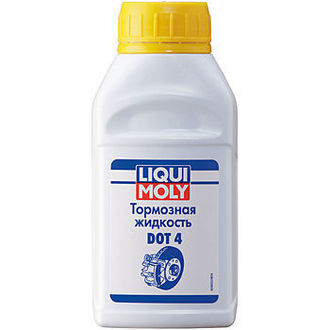 9.0 / 10
Rating
Reviews
About brake fluid usually remember when the brakes significantly lose their effectiveness. With Liqui Moly, I haven’t had a reason to think about it so far. |
The best brake fluids of domestic production
|
RosDOT-4
180
According to the characteristics, the product of the Dzerzhinsky plant is not so bad on the background of classmates - the DOT4 requirements fit the liquid with a reserve, boiling at 255˚ C in a freshly packaged form (surprisingly, here the Russians managed to surpass the Liqui Moly brake fluid that ranked the best) and at 160˚ С after a year of average operation. Viscosity in winter, although it would not be the most optimal for ABS hydraulic units, also covered the requirements of the standard (1600 mm2 / s). Inexpensive liquid RosDOT is widely distributed in the distribution network, and it can probably be found in any part of Russia. She poured on the domestic auto industry. Subject to timely replacement, the car owner will be reliably insured against excessive corrosion of the brake system and wear of the cuffs of the main and working cylinders. Main advantages:
Minuses:
|
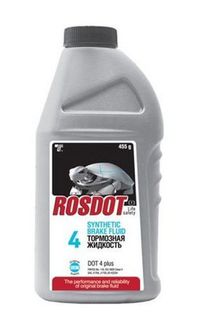 9.4 / 10
Rating
Reviews
For domestic product - a good brake fluid. Surely withstands frequent sudden braking, when the brakes noticeably overheat. |
|
Sintec Super DOT-4
100
The cheapest brake fluid from the top ranked ones was produced by Obninskorgsintez plant located near Moscow, but price and domestic origin do not mean poor performance: in terms of boiling point, Sintec was only slightly inferior to RosDOT (240˚ С / 155˚ С), the same situation with viscosity at -40 ° C (1360 mm2 / s). For a measured drive it will be more than enough, and a small difference in viscosity in actual operation will be impossible to feel. What it is worth finding fault is the instability of quality: in all tests, various automotive brake fluids from Obninsk show different results, although not decreasing with respect to the requirements of the standard, but this does not speak well of the production. Main advantages:
Minuses:
|
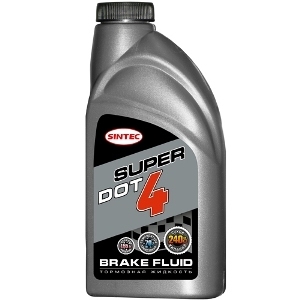 9.1 / 10
Rating
Reviews
It feels like it is no worse than many famous brands at an affordable price. |
Choosing brake fluid, you can sort out tests and lists of characteristics for a long time. But do not forget that even the best brake fluid has a limited resource, and you need to change it according to the regulations, like other technical fluids: you should not save on your own safety.
- RECOMMEND TO READ
- ALL ARTICLES

